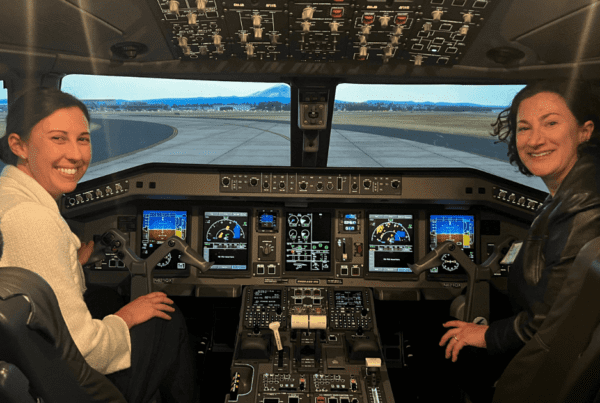Fall marks the start of school, and this year, school looks a little different for medical students at UW School of Medicine.
The School has adopted a hybrid model where any classes that can be online are online, and formats like labs and clinical skills training, where in-person learning is essential for a medical student’s foundation, are in person.
“With the caveat that across the six campuses things might look different and, depending on the location, people might not be able to learn in person,” says Suzanne Allen, MD, Vice Dean, Academic, Rural & Regional Affairs.
The School sees flexibility as a necessity — as it is for all plans in 2020.
“There could be a surge in cases at any campus at any time, a primary care office might say no to having students in clinic based on the numbers of COVID-19 cases, or students or faculty might need to quarantine,” says Allen. “We are hopeful these classes can be in person, but they might need to do things remotely.”
The School is ready should some campuses or students need to move their schedule online.
Looking back: spring quarter 2020
“Thinking back to March, we had students asking to get out of clerkships,” says Allen. “Everyone was so panicked because there was so much that we didn’t know at that time: does everyone need an N95 or are cloth masks OK?”
Since then, from a procedural standpoint and from a daily life standpoint, so much has changed.
With Western Washington being the epicenter of the pandemic in March, all students in the Foundations phase (classroom-based learning) were moved online and shortly after the School decided to pull students in clerkships out of their in-person rotations. This was right before the Association of American Medical Colleges (AAMC) released their own guidelines and medical schools all over the country paused their clinical rotations. In April, the School made the decision not to return to clerkships until summer quarter.
Moving to in-person classes: summer and fall quarter 2020
At the end of June, the start of summer quarter, students returned to their clerkships. Allen reports that things went really well.
“UW Medicine has done a good job of putting processes in place to keep everyone safe and able to learn,” says Allen.
Although making decisions during a pandemic is nuanced and complicated, Allen notes that every decision was driven by four factors:
- Keeping students safe.
- Keeping faculty and staff safe.
- Making sure patients are safe and receiving the care they need.
- Making sure students are getting the education that they need and are on track to graduate.
“It was a huge effort to redo schedules and ensure that everyone could move forward and stay on time to graduate,” says Allen. “Our faculty have been amazing and have put in hours of work to get everything ready for students to have virtual education and distance education.”
To keep students on track to graduate, in-person Patient Care Phase clerkships were cut by a third for the 2020-2021 Patient Care Phase. Although cutting valuable clinic time isn’t ideal, it is still important that students are able to practice their clinical skills in person.
“Learning how to do the lung exam, heart exam or neuro exam are things that I could demonstrate over Zoom, but students couldn’t actually perform the lung, heart or neuro exam over Zoom,” says Allen. “They need to be present with a patient. The anatomy lab is similar, working with the cadavers there are lots of online anatomy options that you can do but for most people it helps to be physically present with a cadaver.”
To support laboratory learning, the School has reduced the amount of people per lab and increased the amount of sections.
Prioritizing laboratory and clinical classes for in-person learning, breaking down anatomy lab sections into smaller groups, reducing clerkship requirements, teaching core courses online and having a flexible attitude are important steps forward.
What to expect: winter and spring quarter 2021
Allen anticipates that during winter quarter, the Foundations Phase will be taught in a similar, hybrid-presentation format and clinical skills and anatomy courses will be in person.
“Everyone is anxious that we could be back to in-person classes soon,” says Allen. “I think we will be doing the same thing in spring quarter and potentially next fall. We would need herd immunity to start gathering in large groups again and I don’t think we’ll be at that point by spring quarter.”
Takeaways for medical students
“What a unique time to be in medical school,” says Allen. “From my generation, the closest thing we can come to in our career was HIV/AIDS.”
Like with COVID-19, there was a lot of fear around who could get HIV, and medical students had to take a back seat.
“There were many advances made in safety because of HIV, people didn’t always wear gloves and there was a big push for everyone to wear gloves if drawing blood or touching bodily fluids,” says Allen. “Safety for the healthcare team improved, so who knows what will be new and unique that we will have learned because of this pandemic.”
Allen also thinks there will be a revival in how much importance we place on public health.
“We separated public health and medical care in the 1920s and we need to marry them back together and have public health and medical care working hand in hand,” says Allen.
A shifting future for medical schools
A few things have changed in medical education across the country since the pandemic began, says Allen. For starters, how people apply to residency programs.
“Most students do 12-15 interviews for residency, which is a lot of travel around the country,” says Allen. “This year they are doing virtual interviews and, from the standpoint of the students, it is a lot less expensive and doesn’t take up as much time.”
Allen adds that the downside of virtual interviews is getting a feel for the community you’re visiting.
“Our alumni association is great and is offering prospective students the opportunity to talk and get a sense of the community,” says Allen.
The School has also started doing virtual medical school interviews and has made the Medical College Admission Test (MCAT) optional for 2021.
Although it’s unknown what changes will stick as status quo for medical schools or even what next semester holds, students and educators alike are learning valuable lessons in resilience.


